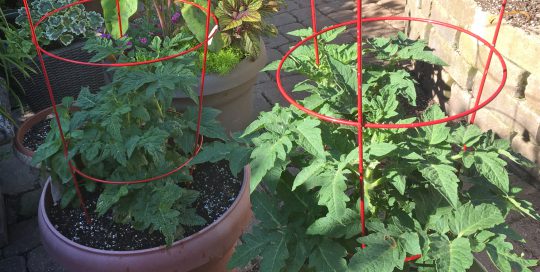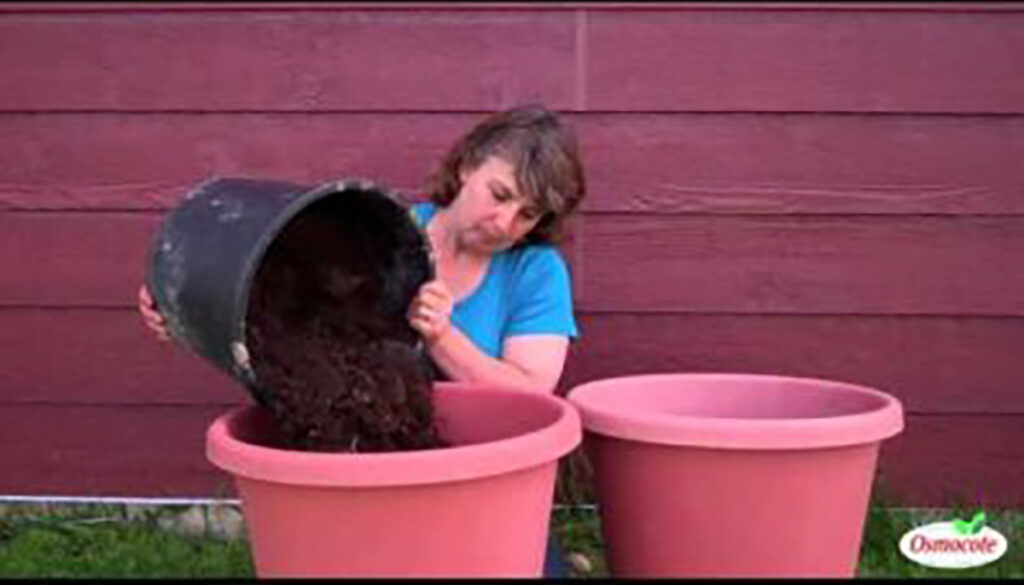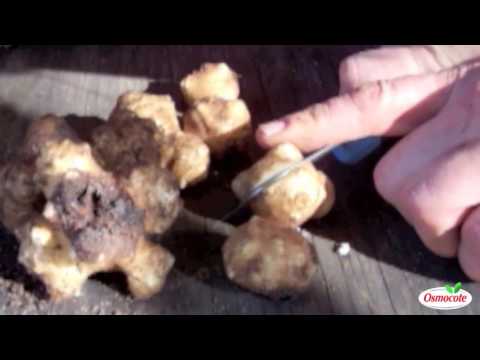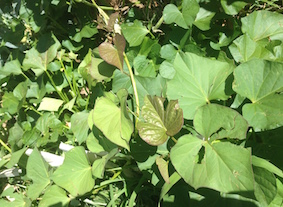Planting Methods
Potatoes need plenty of room to set down roots, send up leaves and create more tubers throughout the summer. If you’re planting in pot or a fiber grow bag, choose one that holds at least 15 gallons of potting mix. Fiber grow bags allow excess water to run out but other pots must have drainage holes. I put about four inches of soil-less potting mix in the bottom of the pot and set 6 seed potato pieces on top with the eyes facing up. Next, I cover them with another 2 inches of soil-less potting mix and then water the pot. When the leaves are 6 to 8 inches tall, I add another inch or two of potting mix and continue doing this throughout the summer. This provides room for developing potatoes. By the end of the growing season, the pot is filled with potting mix and tubers.
You can also grow potatoes in trenches. After digging a long trench about 12 to 18 inches deep, I set the seed pieces in the bottom of the trench about 12 inches apart, in rows 30 to 36 inches apart. Cover the seed potatoes with 2 to 3 inches of soil. Leaves emerge about two weeks later. When the leaves are 6 to 8 inches tall, we “hill” them by mounding soil from each side of the trench about 4 inches high along the base of the plants. Repeat the hilling process as plants grow. This method protects the tubers from turning green (which is toxic) and provides plenty of soil as the tubers grow. Leaves, straw or hay can be used to mulch the plants. This helps conserve moisture and prevent weeds.
Potato Pests
The best disease control is providing fertile soil and consistent moisture (water every 7 to 10 days if you don’t get adequate rainfall) and rotating the crops each year. If you grow potatoes in the ground or in raised beds, try to plant them elsewhere in your garden the following year. We do this because potato beetles and diseases can overwinter in the soil.
Row covers are a great defense against insects. They let in sunlight and water but they exclude insect pests such as Colorado potato beetles, aphids and leafhoppers. Lightweight row covers are available in many garden centers and by mail order. I frequently check the undersides of the leaves for yellow-orange eggs of potato beetles and crush them.










